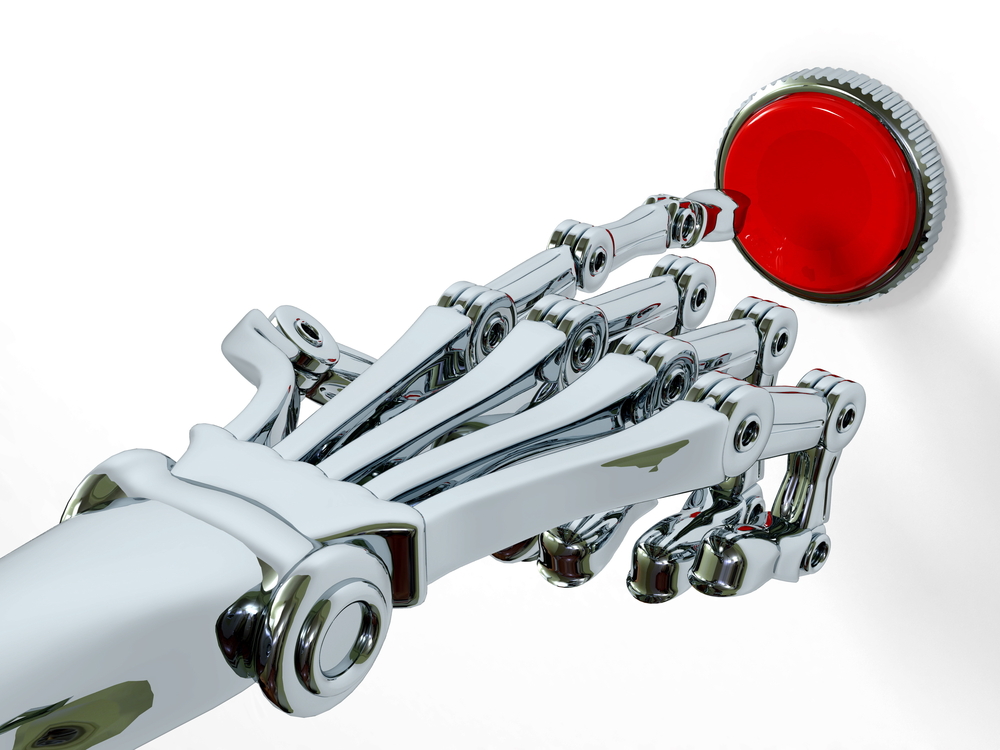Gartner’s new report, ‘Smarter Machines Will Challenge the Human Desire for Control‘ presents the scenario that as machines get smarter, they will inevitable be relied on to make more decisions in a business, leading to the danger that they could become ‘unstoppable’ or run amok.
Though it sounds like something out of a science fiction film, Gartner predicts that technologies such as automation and robotics are becoming more intelligent and gathering more data by the day – and their use is becoming widespread in many industries.
> See also: Gartner wants to prevent the robot uprising by building ‘ethical programming’ into smart machines
‘As smart machines become more capable, and more affordable, they will be more widely deployed in multiple roles across many industries, replacing some human workers. This is nothing new. The deployment of new technology has eliminated millions of jobs over the course of history,’ said Gartner analyst Stephen Prentice.
‘At the same time, entirely new industries have been developed by those technologies, almost always creating millions of new jobs. Organisations must balance the necessity to exploit the significant advances being made in the capabilities of various smart machines with the perceived negative impact of resulting job losses.’
We’ve come a long way from back in the early days of computing when human operators simply ‘fed’ the system with relevant data. Now that sensor networks and the Internet of Things are growing, computers are able to directly collect data about the physical world without any human involvement.
They can effectively be left to their own devices, and this might be a problem since Gartner estimates the number of ‘Internet of Things’ connected devices to soon vastly outnumber the human population. 25 billion of them will be online by 2020, says the analyst firm, all collecting background data on a near constant basis.
‘In effect,’ said Prentice, ‘smart machines are now collecting information about practically every facet of human activity on a continual, pervasive and uncontrollable basis, with no option to ‘turn off’ the activity. The potential reputational damage arising from uncontrolled and inappropriate data collection is well-established and can be substantial.’
But this doesn’t mean they’ll become self-aware anytime soon and enslave us in an ‘i Robot’ type uprising, right?
> See also: A reimagined workforce: blending humans and machines in the digital age
‘The fear among many individuals is that the machines will ‘take over,’ start making decisions on their own and run out of control, posing a threat to individuals, society and even humanity itself,’ continued Prentice. ‘However, within the confines of currently known technology, the idea of machines attaining some level of ‘self-awareness,’ ‘consciousness’ or ‘sentience’ is still the stuff of science fiction. Even with the coming generation of smart machines, which actively ‘learn’ and will be able to adapt their actions to optimise their progress toward a goal, humans can choose to remain in control.’
As the explosive growth of sensors, both physical and virtual, provides smart machines with more ‘perception’ and context of the physical world, this will also enable them to work more autonomously in support of business goals, leaving CIOs to highlight the risks and opportunities involved.
‘CIOs should work hard to increase awareness of this issue inside the organisation and ensure that the implications of this activity are fully understood and that appropriate controls, processes and procedures are established,’ Prentice advises.







